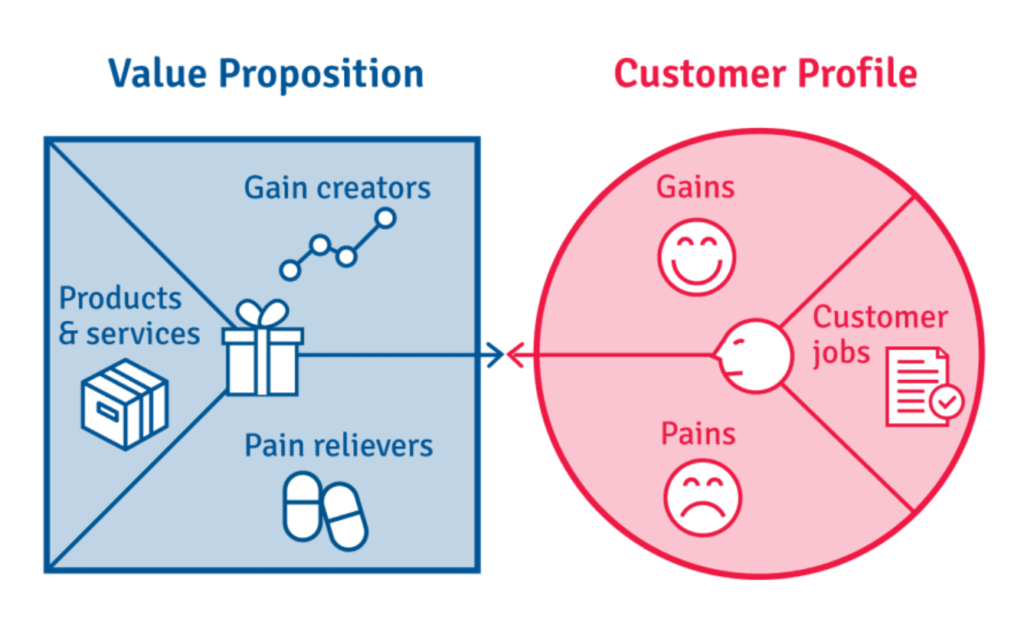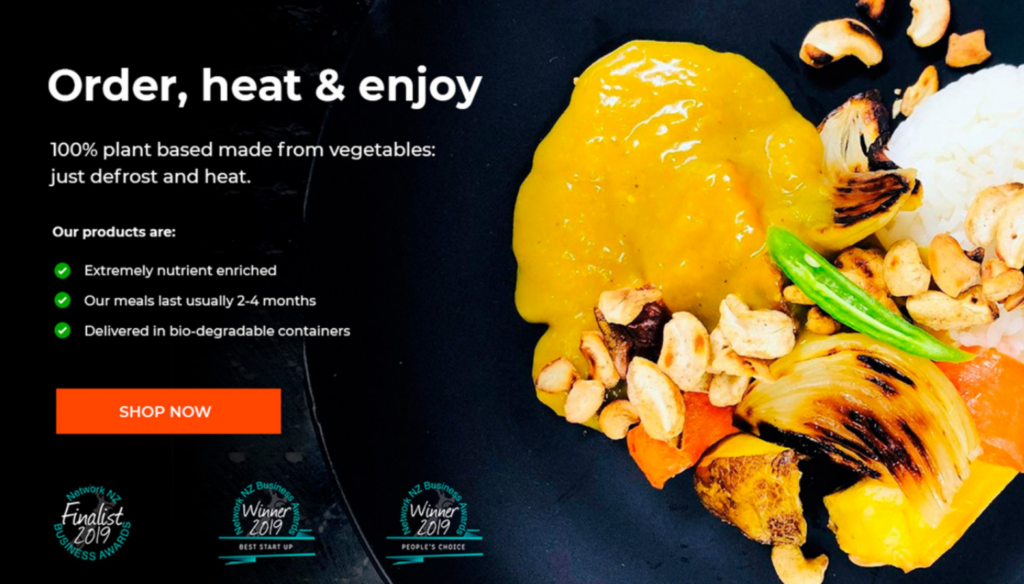In the intricate dance of marketing, a value proposition emerges as a key player, articulating the unique benefits that set a product, service, or solution apart in the bustling marketplace. This concise and compelling statement serves as a beacon, guiding potential customers towards a decision in favour of a particular offering. It transcends mere promotion, addressing customer needs, showcasing distinctive features, and presenting a persuasive case for why choosing a specific product or service is the optimal decision.
What Is a Value Proposition?
A value proposition is a statement that communicates the unique benefits and value that a product, service, or solution provides to its customers. It is a concise and compelling description of why a potential customer should choose a particular product or service over others in the market. A well-crafted value proposition addresses the customer’s needs, highlights the distinctive features of the offering, and explains how it solves a problem or fulfils a desire better than alternatives.

Importance of a value proposition for conversion optimisation:
Captures Customer Attention:
In a crowded marketplace, a well-defined value proposition immediately captures the attention of potential customers. It provides a quick and compelling answer to the question, “Why should I choose this product or service?”
Differentiation and Competitive Edge:
A strong value proposition helps differentiate a product or service from competitors. It highlights the unique features, benefits, or qualities that set it apart. This differentiation is crucial for creating a competitive edge and attracting customers in a saturated market.
Addresses Customer Pain Points:
A well-crafted value proposition addresses the specific needs and pain points of the target audience. It communicates how the product or service provides a solution or fulfils a desire better than alternatives, making it more appealing to potential customers.
Builds Trust and Credibility:
Trust is a critical factor in the decision-making process. A value proposition that is clear, credible, and supported by evidence (such as testimonials, case studies, or data) helps build trust with potential customers, reducing scepticism and increasing the likelihood of conversion.
Guides Decision-Making:
When visitors land on a website or view a product, they are often in the process of making a decision. A compelling value proposition guides this decision-making process by providing the information customers need to assess the product’s value quickly.
Improves User Experience:
A well-communicated value proposition contributes to a positive user experience. Visitors to a website or users of a product should be able to easily understand what makes it valuable and why it’s worth their time and money.
Optimise Conversion Rates:
Conversion optimisation is all about increasing the percentage of website visitors who take the desired action, whether that’s making a purchase, signing up for a newsletter, or filling out a form. A persuasive value proposition directly impacts conversion rates by influencing visitors to take the desired action.
Adaptable for Testing and Iteration:
Value propositions can be tested and refined through A/B testing and other optimisation techniques. By continuously refining and testing the value proposition, businesses can iteratively improve conversion rates over time.
The Core Elements of a Powerful Value Proposition:
- Customer Benefits: Clearly articulate the specific benefits and outcomes that customers can expect from using the product or service.
- Differentiation: Highlight what makes the offering unique and superior to competitors. This could be related to features, quality, price, convenience, or other factors.
- Relevance: Align the value proposition with the target audience’s needs, preferences, and pain points. It should resonate with the customer’s perspective.
- Clarity: Keep the message clear and easy to understand. Avoid jargon or overly complex language that might confuse potential customers.
- Credibility: Provide evidence or support for the claims made in the value proposition. This could include customer testimonials, data, or other forms of validation.
Developing a strong value proposition is essential for effective marketing and sales, as it helps businesses communicate their unique value to potential customers and differentiate themselves in a competitive marketplace.
The Psychology Behind Value Propositions
Understanding consumer psychology is a cornerstone in crafting value propositions that resonate on a deeper level. Delving into emotional triggers and building trust through transparent communication are key aspects of creating compelling value propositions.

Emotional Triggers and Their Impact on Decision-Making:
Diving into the nuances of human emotions provides invaluable insights into consumer behaviour. Emotions act as powerful catalysts for actions, and savvy businesses can leverage this psychological aspect to craft value propositions that truly connect. Whether it’s the elation stemming from the promise of a positive outcome or the apprehension triggered by the fear of a negative consequence, aligning value propositions with these emotional triggers can significantly influence decision-making processes.
By tapping into the emotional fabric of their target audience, these businesses not only capture attention but also forge a lasting emotional connection that goes beyond mere transactions.
Building Trust through Value Propositions:
The essence of a compelling value proposition lies in its ability to be transparent, reliable, and consistent. Transparency, in this context, implies a clear and unambiguous communication of the benefits offered by a product or service. Consumers, now more than ever, seek authenticity and honesty in their interactions with brands. A transparent value proposition not only outlines the advantages but also provides insights into the ethos and principles that govern the brand.
Reliability is another cornerstone of an effective value proposition. In an era where reliability is synonymous with dependability, consumers are inclined to gravitate towards brands that consistently deliver on their promises. Whether it’s the quality of a product, the efficiency of a service, or the overall customer experience, reliability fosters a sense of assurance and confidence, strengthening the bond between the consumer and the brand.
Consistency, the third pillar of a robust value proposition, reinforces the notion of reliability over time. A brand that maintains a uniform standard of excellence in its offerings and customer interactions establishes a sense of dependability.
The Relationship Between Value Propositions and Conversion Rates

A strong value proposition serves as the linchpin for boosting conversion rates. By aligning the unique benefits of a product or service with the needs of the target audience, businesses can create a persuasive narrative that propels users to take the desired action.
To understand this relationship better, let’s break it down:
- Alignment with Audience Needs: A strong value proposition is not just about highlighting features; it’s about aligning those features with the needs and desires of the target audience. When customers perceive that a product or service uniquely caters to their requirements, they are more likely to take the desired action, whether it’s making a purchase or engaging in some other conversion goal.
- Creating a Persuasive Narrative: The value proposition creates a narrative that persuades users to act. It goes beyond a mere description of what a product or service does; it emphasizes why it matters to the customer. This narrative, when compelling and resonant, becomes a powerful motivator for users to move through the conversion funnel.
Now, when we talk about measuring the success of a value proposition through metrics like conversion rates, click-through rates, and bounce rates, we delve into the analytical aspect of marketing:
- Conversion Rates: Conversion rates provide a direct measure of how effective a value proposition is in prompting users to take the desired action. A high conversion rate indicates that the value proposition is resonating with the audience, while a low rate may signal a need for refinement.
- Click-Through Rates (CTR): CTR measures the percentage of users who click on a specific link, often associated with a call-to-action related to the value proposition. An effective value proposition should not only capture attention but also drive users to explore further.
- Bounce Rates: Bounce rates indicate the percentage of visitors who navigate away from the site after viewing only one page. A high bounce rate might suggest that the value proposition is not aligning with visitor expectations, and adjustments may be needed.
By analysing these metrics, businesses gain insights into the performance of their value propositions. This data-driven approach allows for iterative refinement, ensuring that the value proposition continues to meet the evolving needs and expectations of the target audience. Ultimately, a well-crafted and data-informed value proposition becomes a dynamic tool for driving conversions and sustaining business success over time.
Crafting Attention-Grabbing Headlines
Headlines are the first point of contact with your audience, and mastering the art of headline writing is paramount.
Knowing your target audience is the key to writing a killer value proposition. You should think about the pain points, wants, and needs of your buyer persona before creating your value proposition. Speaking directly to them will help you get their attention more easily so you can attract a highly targeted audience to your e-commerce site. Also, it will help your prospects quickly understand what your online store can offer them and what kind of value they should expect. Sometimes it is not necessary to say or show what you are selling, instead of that you must show what people want, what makes them dream; take another perspective. In this way, the concept of the brand can go from the most literal of the product (information, mode of use), to a symbolic way to announce what the product can offer you or where it will take you to have it (status, style, etc).
What the value proposition consists of:
- Headline. What is the end-benefit you’re offering in one short sentence? It can mention the product and/or customer. Make it an attention grabber.
- Sub-headline or a 2–3 sentence paragraph. A specific explanation of what you do/offer, for whom, and why it’s useful.
- 3 bullet points. List the key benefits or features.
- Visual. Images communicate much faster than words. Show the product image, the hero shot, or an image reinforcing your main message.

Elements of a Persuasive Call to Action (CTA)
The CTA is often the most important element on a homepage or landing page. For a CTA that users actually click on, design a button simply cannot be missed. Some ways to ensure your CTA is seen:
- Make it big.
- Place it above the fold.
- Colour contrast the CTA button against the background. It has been proved that colours influence the emotions and reactions of users when they are making decisions. Vibrant colours like red and orange are very useful for CTA buttons.
- Surround the CTA with whitespace.
To determine what your CTA should be, ask yourself these three questions:
- What action do you want your visitors to take most?
- What action do your visitors want to take most?
A good formula to use is to have your CTA finish the sentence “I want to …”.
A/B Testing Your CTAs for Optimal Performance:
The journey to a persuasive CTA involves continuous refinement. We explore the importance of A/B testing in optimising CTAs. By systematically testing variations and analysing performance metrics, businesses can fine-tune their CTAs to align seamlessly with evolving value propositions and user expectations. This iterative approach ensures sustained success in driving conversions.
The Role of Value Propositions in Different Marketing Channels
From crafting concise messages for Twitter to creating visually appealing content for Instagram, we delve into strategies that resonate with diverse social media audiences. Real-world examples illustrate how brands have successfully adapted their value propositions for various social channels, maximising reach and impact.
Social Media
Social media platforms, with their character limitations, demand a succinct and compelling value proposition. Profiles and bios are the digital elevator pitches, encapsulating the brand essence in a few words. The value proposition here should be a magnetic force, compelling users to not just scroll by but to engage and invest in the brand story.

Email Marketing
Email marketing remains a potent tool for direct communication with your audience. Value propositions can be seamlessly integrated into email campaigns to capture attention, nurture leads, and drive conversions.
- Subject Lines
The subject line of an email is the gateway to the brand’s digital realm. A compelling value proposition within this limited space is akin to a captivating headline, enticing the recipient to open the door and explore what lies within. It serves as the initial handshake, setting the tone for the content that follows.
- Email Copy
Within the confines of an email, the value proposition should weave seamlessly through the narrative. Whether offering exclusive content, limited-time promotions, or personalised recommendations, each element should contribute to a cohesive story that reinforces the brand’s unique value proposition.
Search Engine Marketing (SEM) and Search Engine Optimisation (SEO)
- Ad Copy
Paid search advertising demands concise yet impactful ad copy. In this competitive space, the value proposition should shine through, compelling users to click and explore further. It’s not just about visibility; it’s about presenting a compelling case for why the brand deserves attention.
- Landing Pages
Landing pages are the digital crossroads where user intent meets brand narrative. Aligning the content with the value proposition presented in ads or search results is critical for a seamless user experience. A well-designed landing page not only retains the user’s attention but also deepens their understanding of the brand’s unique offerings.
TV and Radio Commercials
The dynamic duo of TV and radio commercials provides a more extended canvas for storytelling. Here, the value proposition should be seamlessly integrated into a well-crafted script. Leveraging audio-visual elements effectively communicates the brand’s unique selling points, leaving a lasting imprint on the audience.

The art of conversion optimisation is a dynamic and iterative process, and value propositions serve as the North Star, providing direction and clarity in a crowded digital landscape. By understanding the psychology of consumer behaviour, tailoring messages to different marketing channels, and embracing continuous testing and refinement, businesses can elevate their value propositions from mere statements to powerful drivers of customer engagement and loyalty.
In the ever-evolving realm of online business, where competition is fierce and consumer expectations are high, mastering the craft of value proposition creation is not just a strategy—it’s a necessity.


